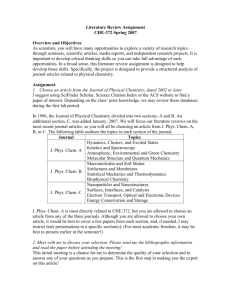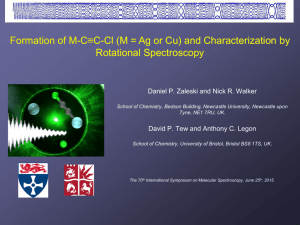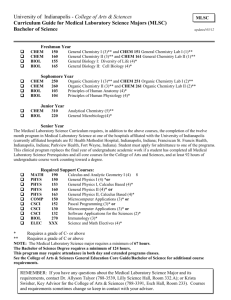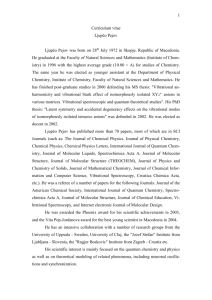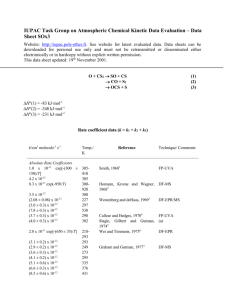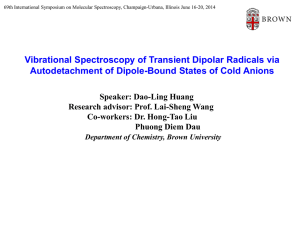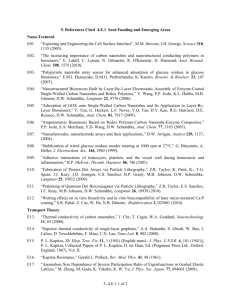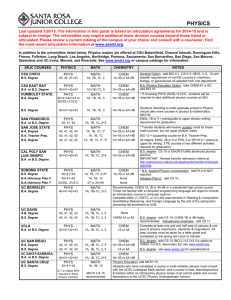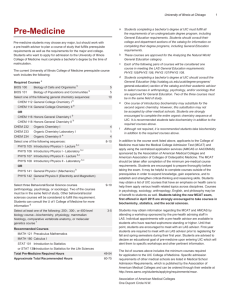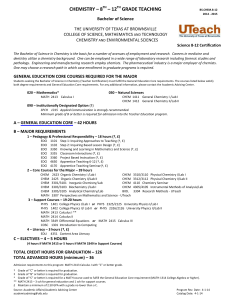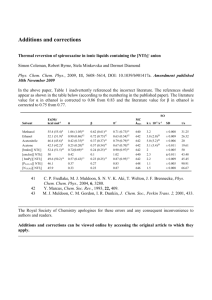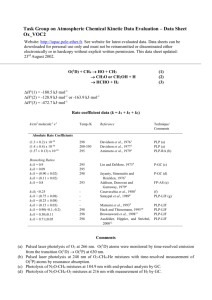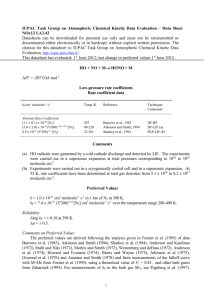Supporting Information-A11.05.0111
advertisement
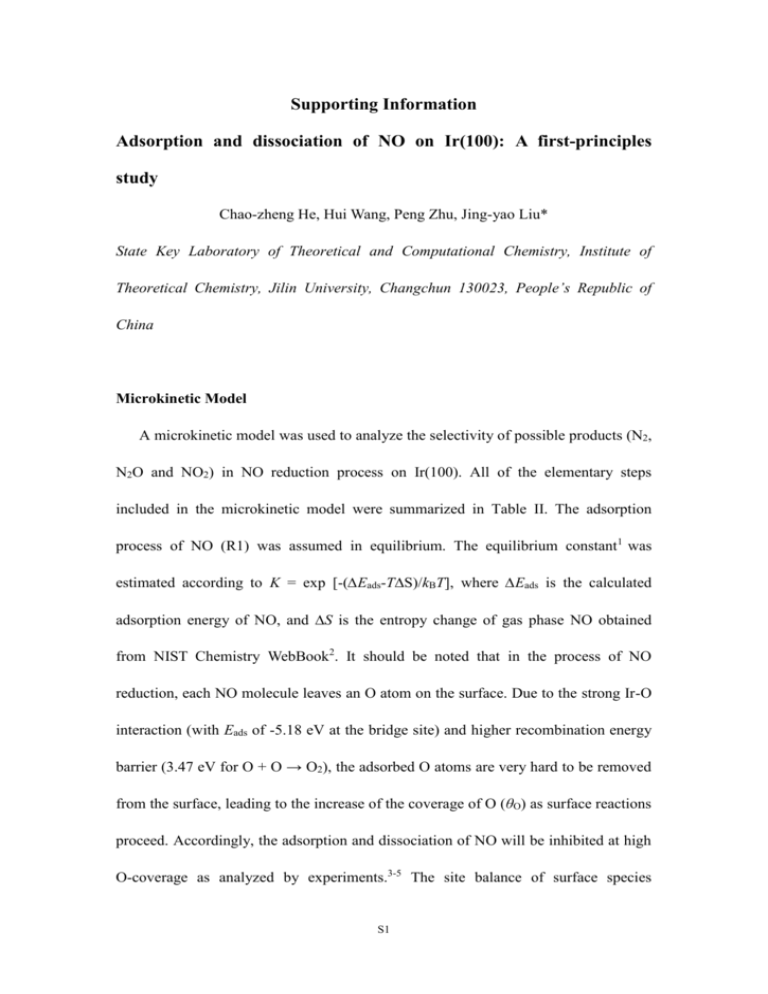
Supporting Information Adsorption and dissociation of NO on Ir(100): A first-principles study Chao-zheng He, Hui Wang, Peng Zhu, Jing-yao Liu* State Key Laboratory of Theoretical and Computational Chemistry, Institute of Theoretical Chemistry, Jilin University, Changchun 130023, People’s Republic of China Microkinetic Model A microkinetic model was used to analyze the selectivity of possible products (N2, N2O and NO2) in NO reduction process on Ir(100). All of the elementary steps included in the microkinetic model were summarized in Table II. The adsorption process of NO (R1) was assumed in equilibrium. The equilibrium constant1 was estimated according to K = exp [-(∆Eads-T∆S)/kBT], where ∆Eads is the calculated adsorption energy of NO, and S is the entropy change of gas phase NO obtained from NIST Chemistry WebBook2. It should be noted that in the process of NO reduction, each NO molecule leaves an O atom on the surface. Due to the strong Ir-O interaction (with Eads of -5.18 eV at the bridge site) and higher recombination energy barrier (3.47 eV for O + O → O2), the adsorbed O atoms are very hard to be removed from the surface, leading to the increase of the coverage of O (θO) as surface reactions proceed. Accordingly, the adsorption and dissociation of NO will be inhibited at high O-coverage as analyzed by experiments.3-5 The site balance of surface species S1 included in the reaction mechanism and free sites (*) can be written as follows: θNO + θN + θO + θN2O + θNO2 + θ* =1, (1) The coverage of surface NO is obtained by θNO = PNOK1θ*, and for the surface species including N, N2O and NO2, the coverages of them are obtained from steady-state approximation,6 where the rates for the production and the consumption are equal: d N = k2fθNOθ*-2k3fθN2-k4fθNθNO-k5fθNθNO+k5rθN2Oθ* = 0, dt 1. N: 2. N2O: 3. NO2: d N 2 O dt =k5fθNθNO-k5rθN2Oθ*-k6fθN2Oθ* = 0, d NO 2 =k7fθOθNO-k7rθNO2θ*-k8fθNO2 = 0, dt (2) (3) (4) The rate constants for reactions R2-8 were calculated using the harmonic transition state theory7-9 in underside expression: k vi exp( Eact ), RT (5) where vi is the pre-exponential factor, and Eact is the ZPE-corrected activation energy. Within harmonic transition state theory, we can calculate the pre-exponential factor (νi) of each reaction pathway using the following definition: νi = 3N IS i 1 3 N 1 TS i 1 f , (6) f where f i IS are the vibrational frequencies at the initial state and f i TS are the vibrational frequencies at the transition state (excluding the imaginary one). References: 1 P. Liu, J. A., Rodriguez, J. Chem. Phys. 126, 164705 (2007). 2 http://webbook.nist.gov/chemistry/. S2 3 P. Gardner, R. Martin, R. Nalerinski, C. L. A. Lamorit, M. J. Weaver, A. M. Bradshaw, J. Chem. Soc. Faraday Trans. 91, 3575 (1995). 4 S. Khatua, G. Held, D. A. King, Surf. Sci. 586, 1 (2005). 5 S. Khatua, Z.-P. Liu, D. A. King, Surf. Sci. 584, 214 (2005). 6 A. Bukoski, H. L. Abbott, and I. Harrisona, J. Chem. Phys. 123, 094707 (2005). 7 G. H. Vineyard, J. Phys. Chem. Solids. 3, 121(1957). 8 C. Wert, C. Zener, Phys. Rev. 76, 1169(1949). 9 D. H Mei, L. J. Xu, G. Henkelman, J. Phys. Chem. C. 113, 4522(2009) S3
